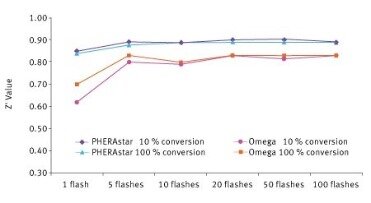The Common Size Analysis of Financial Statements

But rather than act as an alarm for you, it indicates the company had been hugely successful in generating cash to buy back shares, far exceeding what it had retained on its balance sheet. The common size method is appealing for research-intensive companies, for example, because they tend to focus on research and development (R&D) and what it represents as a percent of total sales. When comparing any two common size ratios, it is important to make sure that they are computed by using the same base figure. The cash flow statement provides an overview of the firm’s sources and uses of cash. The cash flow statement is divided among cash flows from operations, cash flows from investing, and cash flows from financing. Each section provides additional information about the sources and uses of cash in each business activity.
Additionally, the relative percentages may be compared across companies and industries. For example, your company may be growing between 1-3% each year for 5 years. But without knowing what your ratios of fixed expenses or debt to equity are, it will be difficult to determine what type of capital you will need to grow. If your debt to equity is 70% to 30%, then your company may be highly-leveraged.

Horizontal analysis relates to specific line items and then compares them to a similar item that was included in the previous financial period. Vertical analysis relates to analyzing specific line items against the base item, and this is from the same financial period. The most significant benefit of a common size analysis is that it can let you identify large or drastic changes in a firm’s financials. Rapid increases or decreases will be readily observable, such as a rapid drop in reported profits during one quarter or year. For example, some companies may sacrifice margins to gain a large market share, which increases revenues at the expense of profit margin.
How is a common size income statement used?
The common size percentages are calculated to show each line item as a percentage of the standard figure or revenue. A common size income statement is an income statement in which each line item is expressed as a percentage of the value of revenue or sales. It is used for vertical analysis, in which each line item in a financial statement is represented as a percentage of a base figure within the statement. Here is a hypothetical example of how a common size income statement can be used in vertical analysis. In this case, ABC Inc. creates an annual traditional income statement on the left, along with a common size statement on the right. Managers and investors can use common size income statements to analyze a business’s performance over time to see trends in costs and profit margins.
We will cover it in more detail below, but notice the R&D expense that averages close to 1.5% of revenues in 2020 and 2021. By looking at this common size income statement, we can see that the company spent 10% of revenues on research and development and 3% on advertising. While evaluating the income statement, the analyst looks at the cost of goods sold compared to revenues and notices that this year it is 45% of revenue.
A cash flow statement shows the way cash is moving in and out of the firm. Cash flows from the firms investments, cash flows from daily operations, and flows from financing are the subdivisions of the cash flow statement. All the items mentioned in a cash flow statement are expressed as a percentage of the net revenue. The Common Size Ratio refers to any number on a business’ financial statements that is expressed as a percentage of a base.
What is the Common Size Ratio?
They can see this breakdown for each firm and compare how different firms function in terms of expenses, proportionally. They can also look at the percentage for each expense over time to see if they are spending more or less on certain areas of the business, such as research and development. On the balance sheet, analysts commonly look to see the percentage of debt and equity to determine capital structure.
Harold Averkamp (CPA, MBA) has worked as a university accounting instructor, accountant, and consultant for more than 25 years. Sign up for Shopify’s free trial to access all of the tools and services you need to start, run, and grow your business. Adam Hayes, Ph.D., CFA, is a financial writer with 15+ years Wall Street experience as a derivatives trader. Besides his extensive derivative trading expertise, Adam is an expert in economics and behavioral finance. Adam received his master’s in economics from The New School for Social Research and his Ph.D. from the University of Wisconsin-Madison in sociology. He is a CFA charterholder as well as holding FINRA Series 7, 55 & 63 licenses.
What Is a Common Size Income Statement?
You can also look to determine an optimal capital structure for a given industry and compare it to the firm being analyzed. Then, you can conclude whether the debt level is too high, excess cash is being retained on the balance sheet, or inventories are growing too high. The goodwill level on a balance sheet also helps indicate the extent to which a company has relied on acquisitions for growth. The above common size statements are prepared in a vertical analysis, referencing each line on the financial statement to a total value on the statement in a given period. On the debt and equity side of the balance sheet, however, there were a few percentage changes worth noting.
A common size financial statement shows each line item on a financial statement as a percentage of a base figure. Most commonly, this means that each revenue, expense, and profit line item on the income statement is presented as a percentage of net sales. In addition, each asset, liability, and shareholders’ equity line item on the balance sheet is expressed as a percentage of total assets. Common size financial statements help to analyze and compare a company’s performance over several periods with varying sales figures. The common size percentages can be subsequently compared to those of competitors to determine how the company is performing relative to the industry.
Firm Capital Mortgage Investment Corporation Announces Q2/2023 Results, as Well as the Declaration of October, and November Monthly Cash Dividends – Yahoo Finance
Firm Capital Mortgage Investment Corporation Announces Q2/2023 Results, as Well as the Declaration of October, and November Monthly Cash Dividends.
Posted: Wed, 02 Aug 2023 21:00:00 GMT [source]
Furthermore, the common size income statement does not showcase trends of each of the line items. Rather, it showcases the trends of the relationship of each of the items to the total. Common-size financial statements are related to a technique known as vertical analysis. Imagine a company examining its second-quarter income statements for the past four years. Looking across from left to right, managers see, for example, that COGS has been climbing—from 30% of revenue to 50% in the most recent second quarter. This kind of ratio analysis can help managers zero in on inefficiencies and look for ways to boost profitability.
Example of a Common Size Income Statement
Common size financial statement is a method to represent financial data in a percentage format. Common size ratios are most effective when compared across multiple companies that operate in the same industry. Ratio analysis can help with the identification of a business’ strengths and weaknesses. That can, in turn, help in formulating changes to the business’ overall strategy.
- This lets you know how much of a cash cushion is available or if a firm is dependent on the markets to refinance debt when it comes due.
- Likewise, all the values mentioned in the financial statements can be converted into a percentage using the above formula.
- A common size balance sheet allows for the relative percentage of each asset, liability, and equity account to be quickly analyzed.
- As with the common size income statement analysis, the common size cash flow statement analysis largely relies on total revenue as the base figure.
- Common size vertical analysis lets you see how certain figures in your business compare with a selected figure in one given time period.
Such a strategy may allow the company to grow faster than comparable companies. Common size analysis is also an excellent tool to compare companies of different sizes but in the same industry. Looking at their financial data can reveal their strategy and their largest expenses that give them a competitive edge over other comparable companies. However, a simple tool like Microsoft Excel can be quite handy in making the process easier and faster.
In the prior year, the balance sheet reflected 55 percent debt and 45 percent equity. In the current year, that balance shifted to 60 percent debt and 40 percent equity. The firm did issue additional stock and showed an increase in retained earnings, both totaling a $10,000 increase in equity. However, the equity increase was much smaller than the total increase in liabilities of $40,000. Long-term debt increased by only $10,000 by issuing additional notes payable.
You would do this for each of the other line items to determine the common size income statement figures. Within each section, there will be additional information that outlines the business activity for each source and use. One of the most common versions of the common size cash flow statement compare absence io vs adp workforce now will express any and all line items as a percentage of total cash flow. It outlines and reports everything from liabilities, assets, and owner equity as a percentage of the sales or assets. Creating this type of financial statement makes for easier analysis between companies.

However, it’s important to recognize that some of these limitations come due to various interpretations of the data being observed. One of the biggest benefits is that it provides investors with information to see changes in the financial statement of a company. A company’s cash flow statement breaks down all of the uses and sources of its cash. For example, it could be cash flows from financing, cash flows from operations, and cash flows from investing.
Research & Development did not change at 1%, Selling General & Administrative declined ever so slightly from 38% to 37% of revenues. Income after taxes went up from 21% to 36%, and Net Income from 20% to 36%. EBITDA went from 32% to 49% of revenues, and EBIT went from 28% to 46% of revenues.
Common Size Income Statement Definition and Example
On the other hand, horizontal analysis refers to the analysis of specific line items and comparing them to a similar line item in the previous or subsequent financial period. Although common size analysis is not as detailed as trend analysis using ratios, it does provide a simple way for financial managers to analyze financial statements. Since we use net sales as the base on the income statement, it tells us how every dollar of net sales is spent by the company. For Synotech, Inc., approximately 51 cents of every sales dollar is used by cost of goods sold and 49 cents of every sales dollar is left in gross profit to cover remaining expenses. Of the 49 cents remaining, almost 35 cents is used by operating expenses (selling, general and administrative), 1 cent by other and 2 cents in interest. We earn almost 11 cents of net income before taxes and over 7 cents in net income after taxes on every sales dollar.
The remainder of that increase is seen in the 5 percent increase in current liabilities. For example, if Company A has $1,000 in cash and $5,000 in total assets, this would be presented in a separate column as 20% in a common size balance sheet. With the cash flow statement, you can divide the statement into its three parts (financing activities, investing activities, and operating activities).

Dejar un comentario
¿Quieres unirte a la conversación?Siéntete libre de contribuir